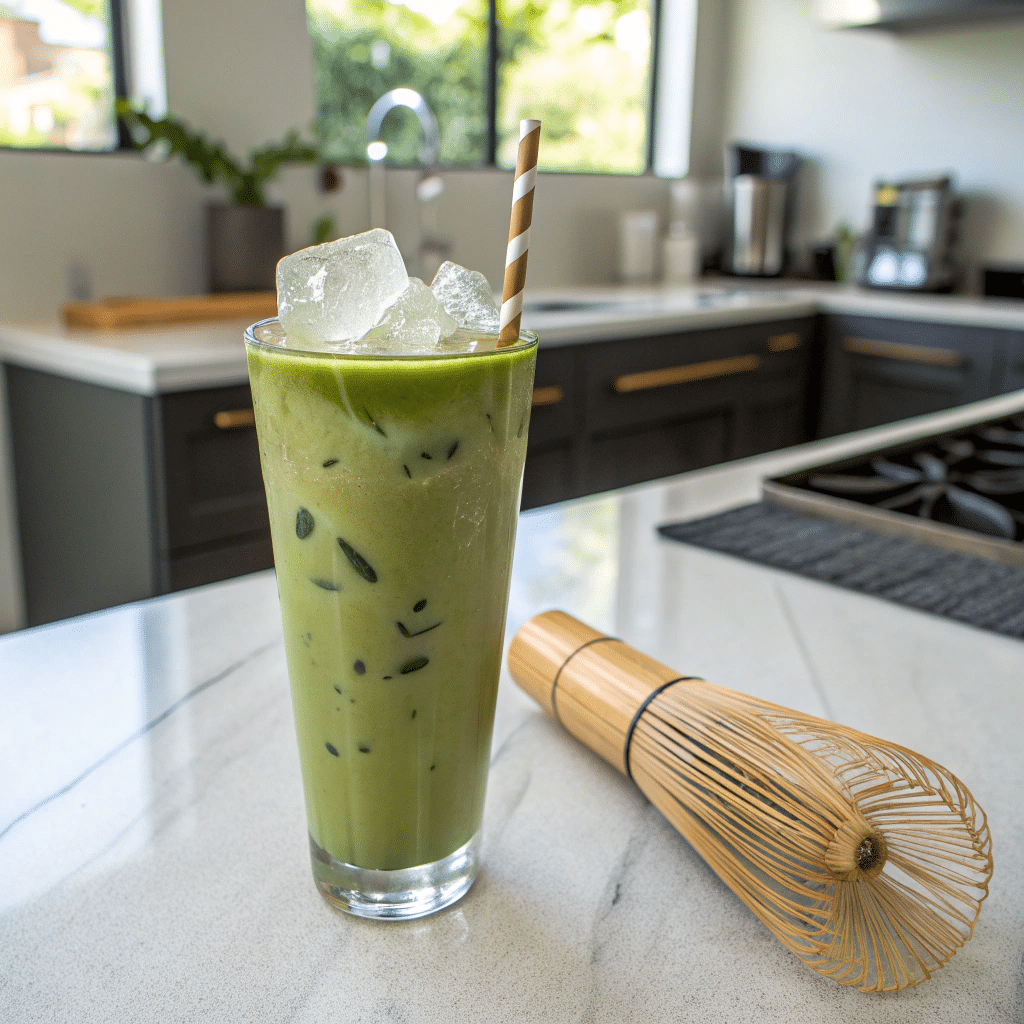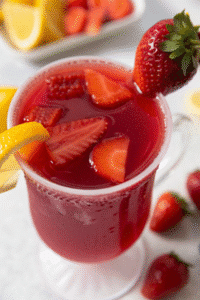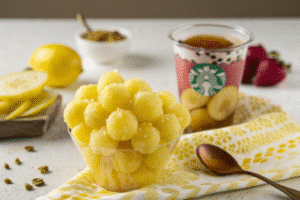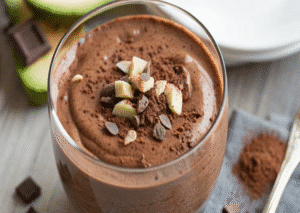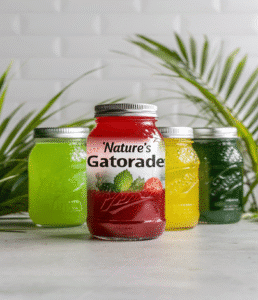The iced matcha latte has quickly become one of the most popular wellness drinks in the USA, praised not just for its vibrant green color and refreshing taste, but also for its health and weight loss benefits. Unlike sugary coffeehouse favorites, this drink delivers clean energy, antioxidants, and a metabolism boost without the crash.
In this complete guide, you’ll discover what makes iced matcha latte so special, its nutritional benefits, how it can help with weight loss, and how to prepare it at home with simple tools. You’ll also learn about variations, mistakes to avoid, and health considerations. By the end, you’ll know exactly how to enjoy this trendy beverage while keeping it low in calories and high in flavor.
Looking for inspiration? Try the Ice Water Hack recipe, which complements this drink for extra fat-burning potential.
Table of Contents
ToggleWhat Is an Iced Matcha Latte?
History and Origin of Matcha
Matcha originates from Japan, where it has been used for centuries in traditional tea ceremonies. Unlike regular green tea, matcha is made from finely ground whole tea leaves, which means you consume the entire leaf and all of its nutrients. Over time, this ceremonial drink evolved into modern recipes, including the iced matcha latte we know today.
How Iced Matcha Latte Differs from Hot Matcha Tea
The iced version blends matcha powder with cold milk (or plant-based alternatives), served over ice for a cooling effect. While hot matcha emphasizes the earthy, slightly bitter flavor, iced matcha lattes tend to be smoother, creamier, and often paired with light sweeteners to balance the taste.
Why Matcha Became a Popular Coffee Alternative
Many people in the USA turn to matcha as a healthier substitute for coffee. It provides a steady energy lift thanks to the combination of caffeine and L-theanine, avoiding the jitters and crashes that often come with coffee. Plus, iced matcha lattes are seen as both a lifestyle choice and a refreshing wellness drink perfect for warm days.
Don’t miss our Organic Oil of Oregano remedy, another natural powerhouse for boosting your immune and digestive health.
Print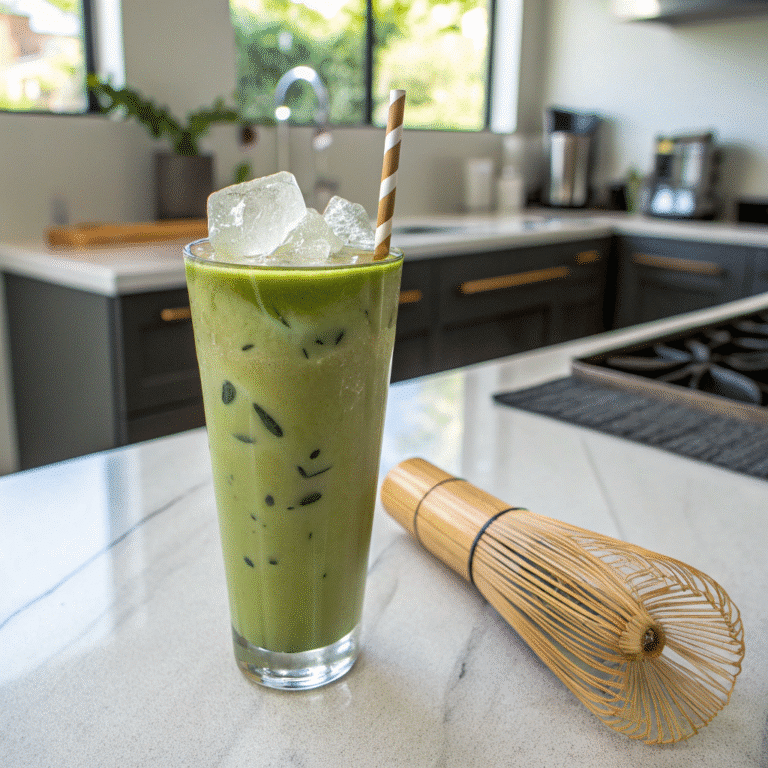
Iced Matcha Latte Recipe (Low-Calorie & Frothy)
5 Stars 4 Stars 3 Stars 2 Stars 1 Star
No reviews
A low-calorie, frothy iced matcha latte that’s packed with antioxidants, metabolism-boosting EGCG, and clean energy. Perfect as a healthy coffee alternative or a refreshing wellness drink.
- Total Time: 5 minutes
- Yield: 1 serving 1x
Ingredients
1 tsp high-quality matcha powder
1 cup unsweetened almond milk (or plant-based milk of choice)
2–3 tbsp cold water (for whisking matcha)
1 tsp natural sweetener (optional: stevia, monk fruit, or honey)
Ice cubes
Instructions
1. Sift the matcha powder into a bowl or cup to remove clumps.
2. Add 2–3 tablespoons of cold water and whisk the matcha until smooth and frothy using a bamboo whisk or electric frother.
3. Fill a tall glass with ice cubes.
4. Pour in the unsweetened almond milk.
5. Pour the whisked matcha over the milk and stir gently.
6. Add natural sweetener if desired and stir again.
7. Serve immediately and enjoy your refreshing iced matcha latte!
Notes
For a stronger flavor, you can use up to 1.5 tsp of matcha powder.
Use a milk frother or blender to achieve an extra creamy, lump-free texture.
Add a drop of vanilla extract or a pinch of cinnamon for added flavor without extra calories.
Use stevia or monk fruit for a zero-calorie sweetener option.
To avoid clumps, always sift your matcha and use cold water first.
- Author: Jessica Lupone!
- Prep Time: 5 minutes
- Cook Time: 0 minutes
- Category: Drinks
- Method: No-Cook
- Cuisine: Japanese-Inspired
- Diet: Vegan
Nutrition
- Serving Size: 1 glass
- Calories: 45
- Sugar: 1g
- Sodium: 150mg
- Fat: 2g
- Saturated Fat: 0g
- Unsaturated Fat: 2g
- Trans Fat: 0g
- Carbohydrates: 4g
- Fiber: 1g
- Protein: 1g
- Cholesterol: 0mg
Nutritional Benefits of Iced Matcha Latte
Key Nutrients in Matcha Powder
One of the main reasons iced matcha latte stands out is its nutrient profile. Matcha is rich in catechins, a type of antioxidant that helps the body fight free radicals and reduce oxidative stress. It also contains vitamins A, C, and E, along with minerals like potassium and magnesium. Because matcha powder uses the whole tea leaf, its nutrient density is far higher than steeped green tea.
Low-Calorie Profile of the Iced Version
When prepared with unsweetened almond milk or other light alternatives, iced matcha latte can be a very low-calorie drink — often under 50 calories per serving. That makes it an excellent choice for people watching their calorie intake. By skipping added sugar or heavy cream, you can enjoy the refreshing taste while supporting weight loss goals.
Here’s a quick breakdown of an average homemade iced matcha latte with almond milk:
| Ingredient | Calories | Key Benefits |
|---|---|---|
| 1 tsp matcha powder | ~5 | Antioxidants, metabolism boost |
| 1 cup almond milk | ~30 | Low-calorie, dairy-free |
| 1 tsp honey/stevia | ~20 (honey) / 0 (stevia) | Natural sweetness |
| Ice cubes | 0 | Refreshing texture |
Average calories: 35–55 calories depending on sweetener choice.
Matcha vs. Regular Coffee or Green Tea
Compared to regular green tea, matcha contains significantly higher levels of antioxidants and caffeine, making it more effective for boosting energy and metabolism. When compared to coffee, matcha provides a smoother energy release thanks to L-theanine, which promotes focus and calmness. While a standard latte from a coffee shop can run up to 200–300 calories, an iced matcha latte remains light, making it a healthier option for everyday use.
Discover great ideas like the Keto & Low Carb recipes, which complement a natural Ozempic recipe for maximum fat-burning synergy.

Why This Matcha Latte Works for Weight Loss
Role of EGCG in Boosting Metabolism
At the core of matcha’s weight loss benefits is EGCG (epigallocatechin gallate), a powerful antioxidant that helps boost metabolism. Studies show that EGCG increases thermogenesis — the body’s ability to burn calories for energy. When consumed regularly, iced matcha latte can slightly increase daily calorie burn, supporting weight management over time.
Appetite Control and Satiety Effects
Another reason iced matcha latte works for weight loss is its effect on hunger. Thanks to the combination of caffeine and L-theanine, matcha helps reduce cravings and provides a sense of satiety. Drinking an iced matcha latte in the afternoon may help you avoid reaching for sugary snacks or extra coffee.
Matcha’s Impact on Blood Sugar Balance
Stable blood sugar is key for maintaining a healthy weight. Matcha has been linked to better regulation of glucose levels, preventing the spikes and crashes caused by sugary drinks. Choosing a low-calorie iced matcha latte over a soda or frappuccino helps you stay energized while avoiding unnecessary sugar intake that often leads to fat storage.
Don’t miss our full guide to the Ice Water Hack for another natural remedy gaining buzz in men’s health circles.
How to Make a Low-Calorie Iced Matcha Latte
Basic Ingredients You’ll Need
To prepare a refreshing low-calorie iced matcha latte at home, you only need a few simple ingredients:
- 1 teaspoon of high-quality matcha powder
- 1 cup of unsweetened almond milk (or other plant-based milk)
- Ice cubes
- Natural sweetener (optional: stevia, monk fruit, or a small drizzle of honey)
- Cold water for whisking the matcha
Step-by-Step Recipe Instructions
- Sift the matcha powder into a bowl or cup to remove clumps.
- Add a small amount of cold water (2–3 tablespoons) and whisk until smooth and frothy.
- Fill a glass with ice cubes and pour in the almond milk.
- Pour the whisked matcha mixture over the milk and stir gently.
- Sweeten to taste with stevia or a natural sweetener.
This simple process gives you a creamy, refreshing, and low-calorie drink that’s both energizing and satisfying.
Tips for Cutting Calories Without Losing Flavor
- Use unsweetened plant-based milks like almond, coconut, or oat milk instead of dairy.
- Swap sugar with zero-calorie sweeteners such as stevia or monk fruit.
- Add vanilla extract for a natural flavor boost without extra calories.
- Stick to 1 teaspoon of matcha powder to keep caffeine intake balanced and calories minimal.
By making it at home, you control every ingredient, ensuring your iced matcha latte stays light, healthy, and perfectly tailored to your taste.
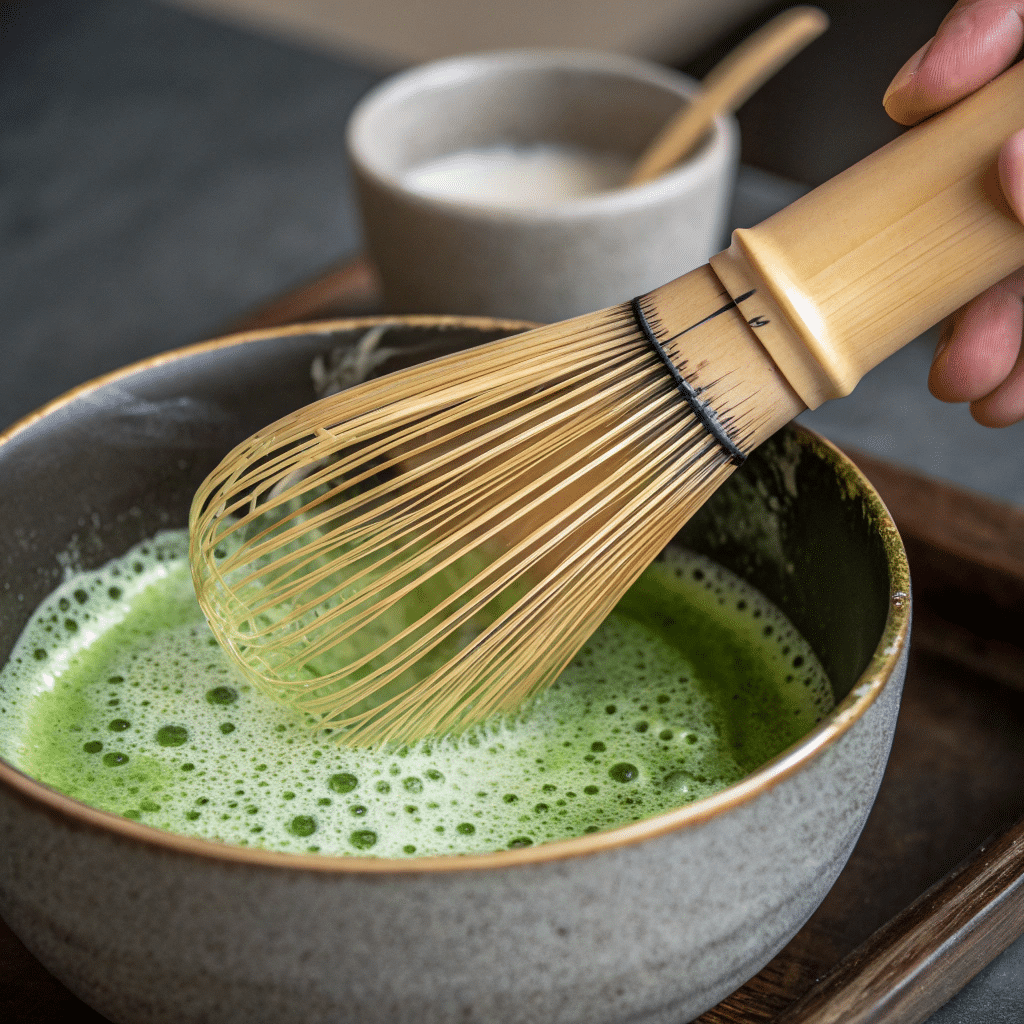
Tools to Get That Frothy Perfection
Best Whisks and Frothers for Matcha
Traditional Japanese tea ceremonies use a chasen, a bamboo whisk designed to mix matcha powder evenly with water. For modern kitchens, electric milk frothers are a quick and effective option. Both tools create the signature frothy texture that makes an iced matcha latte smooth and creamy.
Blender vs. Hand Whisk Methods
If you don’t own a frother, a simple blender can do the job. Add matcha powder, water, and milk, then blend until smooth. A hand whisk also works, though it requires more effort and may not achieve the same foaminess as a frother. For beginners, starting with a frother or blender ensures a lump-free latte every time.
How to Avoid Lumps in Matcha
Lumps are one of the most common issues when preparing iced matcha latte. To fix this:
- Always sift the matcha powder before whisking.
- Use cool water first — hot water can make clumps harder to dissolve.
- Whisk in a “W” or zig-zag motion rather than stirring in circles.
With the right tools and techniques, you’ll enjoy a perfectly smooth iced matcha latte with a frothy top, just like a café-quality drink at home.
Discover great ideas like the Natural Ozempic Recipe which can be combined with baking soda detox strategies to support weight and energy goals.
Variations of Iced Matcha Latte Recipes
Dairy-Free and Vegan Options
A classic iced matcha latte is easily adaptable for vegan or dairy-free diets. Swap regular milk for almond, oat, soy, or coconut milk. Each option gives a slightly different flavor profile — almond adds nuttiness, oat creates a creamy texture, and coconut brings a tropical twist.
Sweetener Alternatives: Stevia, Honey, Maple Syrup
Not everyone likes their latte plain, and that’s where sweeteners come in. For a low-calorie drink, stevia or monk fruit are the best picks. If you prefer natural sweetness, a small amount of honey or maple syrup works well, though they add extra calories. The key is moderation — just a teaspoon is usually enough.
Flavored Matcha Lattes: Vanilla, Coconut, Mint
Want to switch things up? Try flavored iced matcha latte variations:
- Vanilla Iced Matcha Latte: Add a drop of vanilla extract for a rich, smooth flavor.
- Coconut Iced Matcha Latte: Use coconut milk and a sprinkle of shredded coconut for a tropical vibe.
- Mint Iced Matcha Latte: Add fresh mint leaves or mint extract for a refreshing, cooling drink.
These variations let you enjoy matcha in multiple ways without losing its health benefits. They also make the iced matcha latte a versatile beverage that can be tailored to your personal taste.
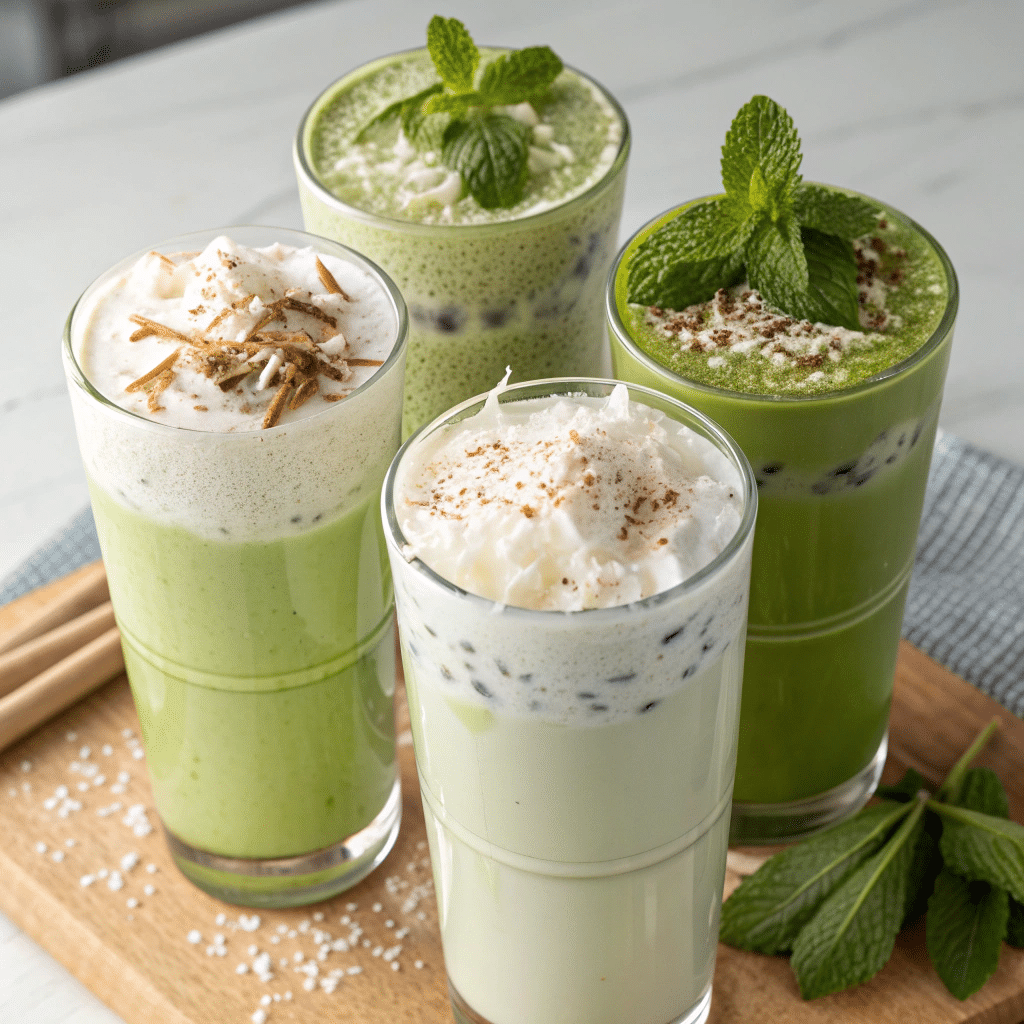
Common Mistakes When Making Iced Matcha Latte
Using Low-Quality Matcha Powder
One of the biggest mistakes is choosing the wrong type of matcha. Culinary-grade matcha is often bitter and dull in color, while ceremonial-grade matcha is vibrant green and much smoother in flavor. For the best iced matcha latte, always invest in high-quality powder.
Over-Sweetening the Latte
Many people turn their healthy iced matcha latte into a calorie bomb by adding too much sugar or flavored syrups. Remember, the natural earthy flavor of matcha should shine through. If you need sweetness, stick to a small amount of honey, stevia, or monk fruit.
Incorrect Water Temperature and Mixing
Matcha doesn’t dissolve like instant coffee. If you pour boiling water directly onto the powder, it can scorch the tea and create clumps. Instead, use cool or lukewarm water first to blend the matcha before adding milk and ice. Proper whisking or blending is key to avoiding a gritty texture.
By avoiding these mistakes, your iced matcha latte will not only taste better but also deliver its full range of health benefits.
Health Considerations and Side Effects
How Much Matcha Is Too Much?
While iced matcha latte is healthy, moderation is important. Experts recommend no more than 2–3 cups per day, since each serving contains caffeine and antioxidants. Overconsumption may lead to headaches, insomnia, or stomach upset.
Caffeine Sensitivity and Who Should Avoid It
Each teaspoon of matcha contains about 70 mg of caffeine, which is less than coffee but still significant. People sensitive to caffeine, pregnant women, or those with certain heart conditions should limit intake. If you want the benefits without the jitters, start with half a teaspoon of matcha per serving.
Safe Daily Dosage Recommendations
A safe range is 1–2 teaspoons of matcha per day. This amount provides enough EGCG and antioxidants for weight management and energy support without risking side effects. Pairing your iced matcha latte with a balanced diet ensures you get the most from this superfood drink.
Conclusion
The iced matcha latte is more than just a trendy drink — it’s a refreshing, low-calorie beverage packed with antioxidants and nutrients that support weight loss, focus, and long-lasting energy. By learning how to prepare it at home, choosing the right tools, and avoiding common mistakes, you can enjoy café-quality iced matcha lattes every day without the extra sugar or calories.
Whether you’re looking for a healthy coffee alternative, a metabolism booster, or just a tasty way to stay cool, this drink checks all the boxes. Don’t miss our upcoming guide to healthy summer drinks on Mom and Grandma Cooks — discover great ideas like infused waters, cold brew teas, and light smoothies.
For more recipes Follow me in our Social media
Facebook: https://www.facebook.com/profile.php?id=61573913076847
Pinterest: https://www.pinterest.com/momandgrandmacooks/
Medium: https://medium.com/@momandgrandmacooks
FAQs on Iced Matcha Latte
Why This Matcha Latte Works for Weight Loss
The iced matcha latte helps with weight loss thanks to its unique mix of EGCG antioxidants, caffeine, and L-theanine. Together, they boost metabolism, burn fat more efficiently, and help control appetite. Choosing a low-calorie version makes it even more effective as part of a healthy lifestyle.
How to Make a Low-Calorie Iced Matcha Latte
To keep your latte light, use unsweetened almond milk or oat milk, 1 teaspoon of matcha powder, ice, and a calorie-free sweetener like stevia. This version usually stays under 50 calories, making it a smart choice for anyone watching their intake.
Tools to Get That Frothy Perfection
For best results, use a bamboo whisk (chasen) or a small electric frother. These tools break down clumps and create the signature frothy finish. If you don’t have these, a blender is a reliable backup for smooth, lump-free matcha lattes.

